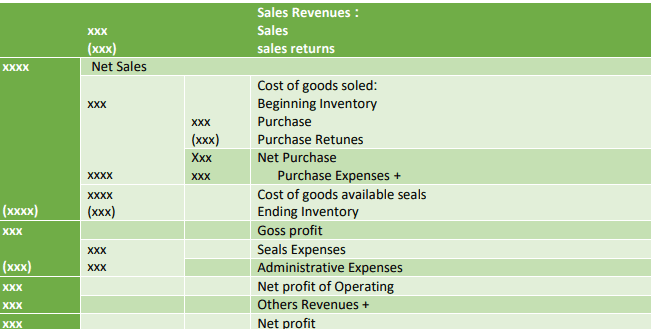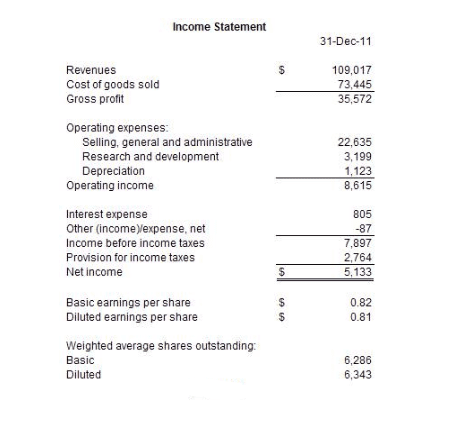If You Have Questions Please, Contact Us

The three financial statements – the balance sheet, the income statement, and the cash flow statement – all serve different purposes. One might be more suited to determine the company’s profitability, and another might be better for showing the company’s assets. They should all be studied together because they are connected, and by analyzing these relationships, investors are able to uncover the economics of particular businesses and decide if purchasing or selling them are prudent choices.
ʻʻThe income statement measures the results of operations during the periodʼʼ
The income statement is an important financial report that shows an enterprise’s success in terms of profitability. Unlike the balance sheet the income statement is prepared for a given period such as a quarter or a year, versus a snapshot on a particular day
The preparation of this financial report is based on the following formula:
Revenues – expenses = profit or loss
If the business brings in more revenues than it pays out in expenses, it reports a profit. Otherwise, it reports a loss. The following is a sample income statement.
Revenues: Revenues article Revenue – Cash inflows of assets of an entity during a period from rendering services, producing or delivering goods, or other activities that constitute the entity’s ongoing main operations.
It is often given as sales discounts sales minus, allowances and returns. Each time a company performs a service or sells a product, it obtains revenue. This usually is mentioned as sales revenue or gross sales.

Expenses: Cash outflows or other using up of incurrence or assets of liabilities during a period from rendering services, producing or delivering goods, or carrying out other activities that constitute the entity’s ongoing major of the company.
The Profit and Loss account summaries a firm’s trading results over a period and shows how the resulting profits were used, or how the losses were financed. The profit and loss account tends to have more value to the managers of the firm than the balance sheet that is directed more at those outside reviewing the firm. It covers the profits and losses usually over a period of a year, larger businesses often produce them half-yearly or quarterly. The most features of a profit and loss account are
1. Sales revenue fewer costs = profit this is the basic equation that underpins the profit and loss account. Revenue can cover a wide range of activities, investments, sales receipts, cash transactions, etc. Sales revenue excludes any benefit tax.
2. The cost of goods sold is the first group of subtractions, which is about how much it cost you to produce the goods and services that generated the revenue. It includes all costs related to the product (often called production costs). So direct materials, direct labor, plus all overhead costs that can be allocated to the production process.
.3 Gross profit is the sum remaining when you have deducted the cost of goods sold from sales revenue
Income statements help investors and Creditors to determine the past financial performance of the enterprises, assess the capability of generating future cash flows through reports of the expenses and income, and predict future performance.
Information on an income statement contains several limitations: Items that might be relevant but cannot be reliably measured (e.g. brand recognition and loyalty) are not reported.
Some numbers depend on accounting methods used (e.g.to measure inventory level using FIFO or LIFO accounting).
Some numbers in income statements rely on estimates and judgments (e.g. depreciation expense depends on salvage value and estimated useful life).
Guidelines for statements of comprehensive income and income statements of business entities are formulated by the IFRS IFRS article International Accounting Standards Board and numerous country-specific organizations, as an example: in some companies, Names and usage of various accounts within the income statement depend on the kind of organization, industry practices and therefore the requirements of various jurisdictions. If applicable to the business, summary values for the following items should be included within the income statement.
Operating section: Revenue – Expenses – Cost of Goods Sold (COGS) / Cost of Sales

Cost of Goods Sold (COGS) / Cost of Sales: represents the direct costs attributable to goods produced and sold by a business (merchandizing or manufacturing). It includes direct labor, material costs, and overhead.
See: Real Difference between Expenses and Cost of Goods Sold Operating expenses article